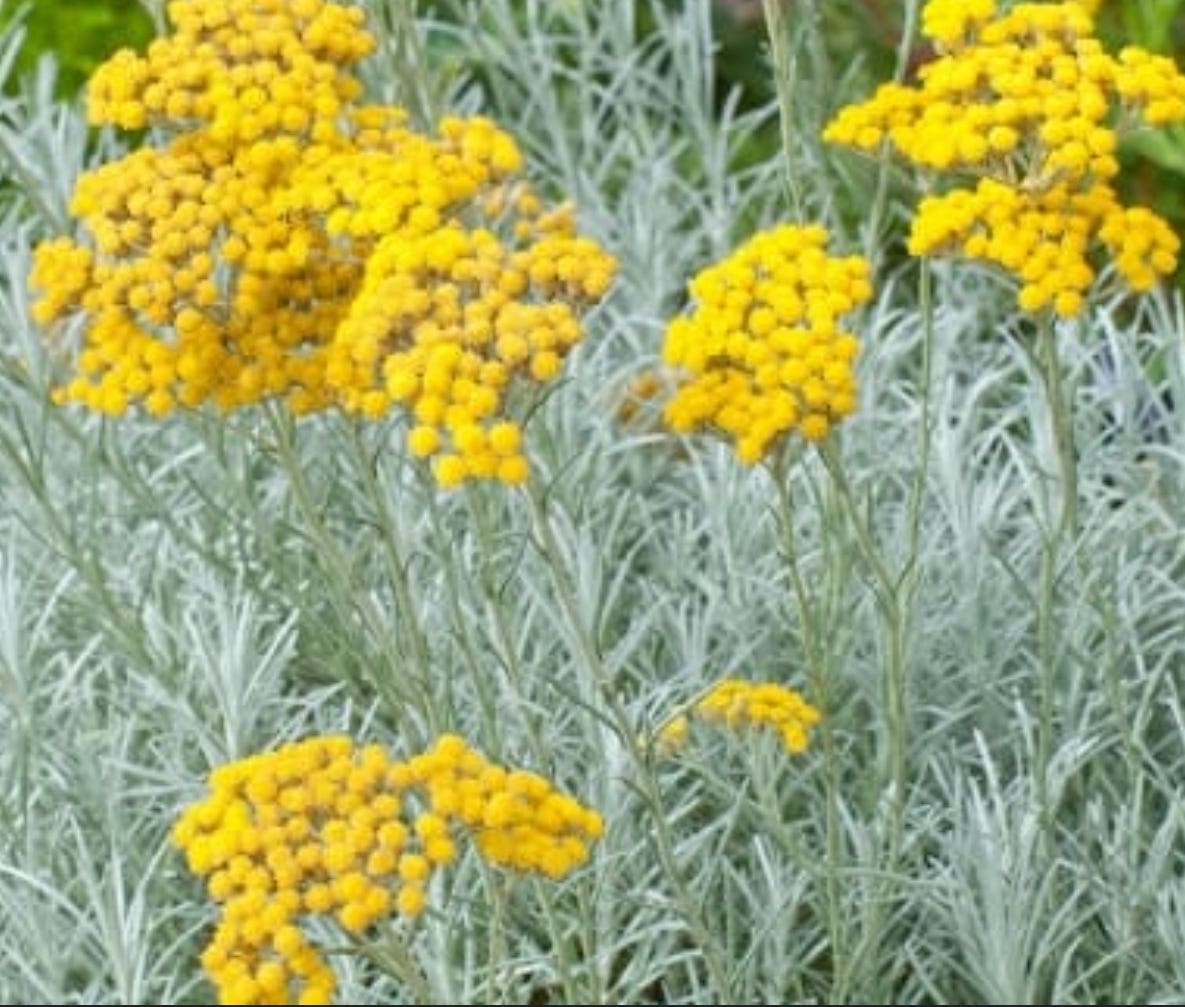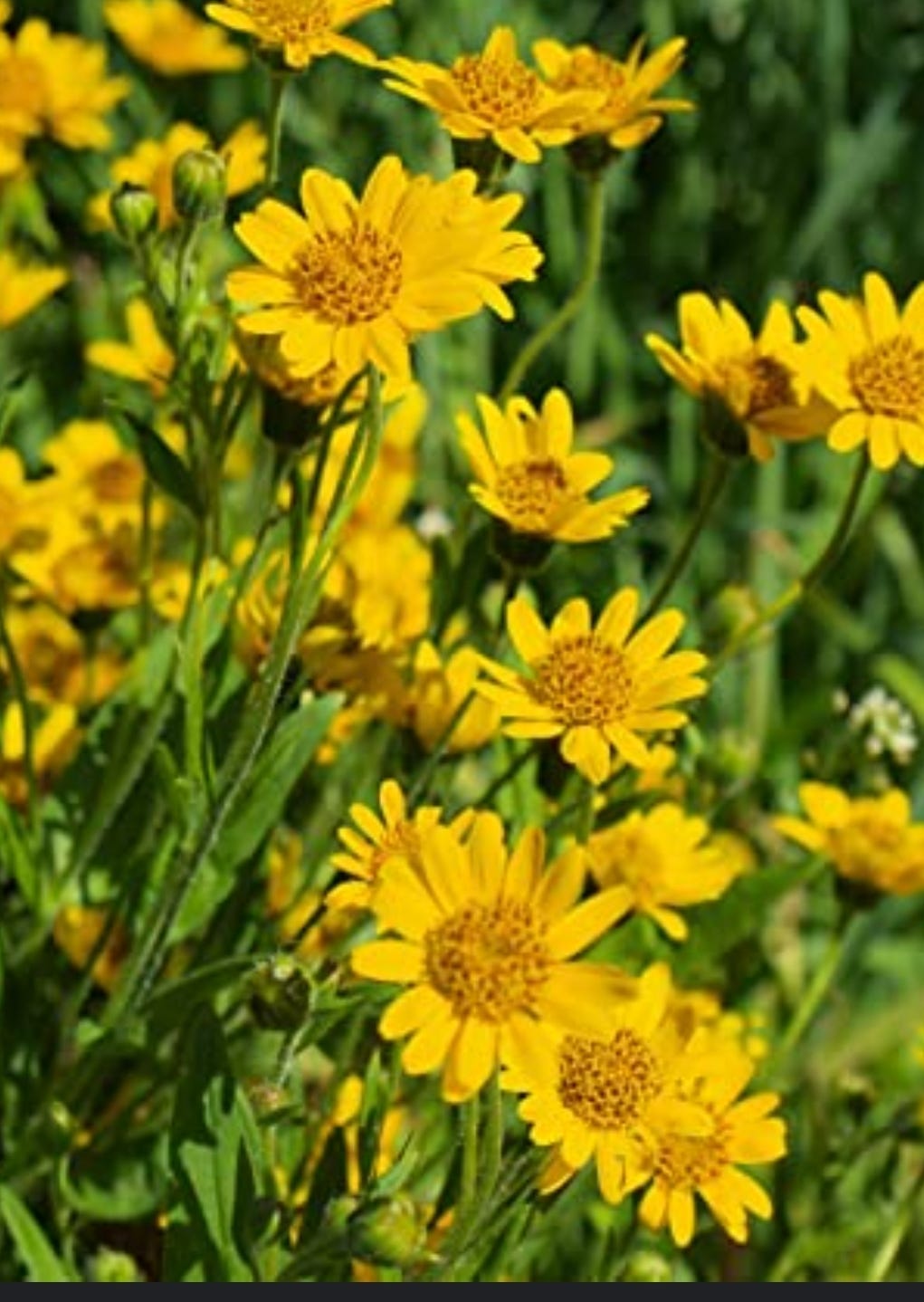The Healing Trinity: Exploring Helichrysum, Arnica, and Comfrey Across Traditional and Modern Practices.
From ancient wisdom to modern applications, discover how these botanical powerhous
For centuries, humanity has turned to the natural world for healing. Among the vast botanical pharmacopeia, Helichrysum, Arnica, and Comfrey stand out as potent allies in addressing a range of ailments. While each possesses unique properties, their applications often overlap, and their benefits are recognized across diverse healing traditions, including Ayurveda, Homeopathy, and Herbology.
Helichrysum: The Everlasting Healer
Often referred to as "Immortelle" or "Everlasting," Helichrysum (typically Helichrysum italicum) is revered for its remarkable skin-regenerating and anti-inflammatory properties.
Herbology: In Western herbalism, Helichrysum essential oil is highly prized. It's renowned for its ability to reduce bruising, swelling, and pain, making it a staple for sprains, strains, and post-operative recovery. Its cicatrisant (scar-reducing) properties are also well-documented, making it beneficial for old and new scars, stretch marks, and skin imperfections. Topically, it's used in diluted forms or in carrier oils for its anti-allergenic, anti-microbial, and antioxidant effects, aiding in conditions like eczema, psoriasis, and acne.
Ayurveda: While not a traditional Ayurvedic herb native to India, Helichrysum's properties align with Ayurvedic principles. Its cooling and Pitta-pacifying qualities would be beneficial for inflammatory skin conditions and reducing excess heat (Pitta) in the body. Its wound-healing and tissue-regenerating abilities resonate with Ayurvedic concepts of Rakta (blood) and Mamsa (muscle) tissue health. It could be seen as an external application to balance aggravated Pitta and Vata doshas.
Homeopathy: In homeopathy, Helichrysum arenarium (a different species, often called "Dwarf Everlast") is used in tinctures for conditions like gall bladder complaints and liver issues. However, Helichrysum italicum is less commonly found in the homeopathic materia medica for direct use, though its properties might inform remedies for similar symptom pictures. Homeopathic preparations would involve highly diluted forms, aiming to stimulate the body's self-healing mechanisms based on the "like cures like" principle.
Arnica: The Bruise and Trauma Master
Arnica (Arnica montana) is perhaps one of the most well-known herbal remedies for trauma, bruising, and muscle soreness.
Herbology: Traditional herbal medicine widely employs Arnica, primarily for external use due to its potential toxicity if ingested in undiluted forms. Its potent anti-inflammatory and analgesic compounds, like helenalin, make it incredibly effective for reducing swelling, pain, and discoloration from bruises, sprains, and muscle aches. It's commonly found in creams, gels, and salves for topical application, particularly for athletes and those recovering from injuries or surgery. It's also used to soothe insect bites and minor skin irritations.
Ayurveda: Arnica is not a traditional Ayurvedic herb. However, its properties of reducing swelling, pain, and inflammation align with Ayurvedic approaches to pacifying aggravated Vata and Pitta doshas. In an Ayurvedic context, its external application could be seen as a way to support Rakta mokshana (bloodletting, metaphorically referring to clearing stagnant blood) and to reduce shotha (inflammation).
Homeopathy: Arnica is a cornerstone of homeopathic first aid. Arnica montana 30C or 200C is a common remedy for shock, trauma, bruising, muscle soreness, jet lag, and even emotional shock. The homeopathic principle is that infinitesimal doses of Arnica stimulate the body's natural healing response to these types of injuries, both physical and emotional. It's often the first remedy considered for any "oof" moment, regardless of the severity.
Comfrey: The Bone Knitter
Comfrey (Symphytum officinale), often called "knitbone," has a long history of use in mending broken bones and promoting tissue repair.
Herbology: Comfrey's remarkable healing properties are largely attributed to allantoin, a compound that promotes cell proliferation and tissue regeneration. Traditionally, comfrey root and leaf poultices and compresses have been used externally for sprains, fractures, wounds, and ulcers, accelerating healing and reducing inflammation. Due to pyrrolizidine alkaloids (PAs) found in the plant, which can be hepatotoxic, its internal use is generally not recommended by modern herbalists, and prolonged external use on broken skin is also cautioned against. However, its efficacy in speeding up the healing of bone and connective tissue is well-regarded.
Ayurveda: While Comfrey isn't a native Ayurvedic herb, its properties align with Ayurvedic principles of Asthi (bone) and Majja (marrow) tissue health. Its ability to promote tissue regeneration and reduce inflammation would be beneficial for conditions related to imbalances in Vata dosha, particularly those affecting bones and joints. Externally, it could be seen as a Vatahara and Shothahara (inflammation-reducing) herb.
Homeopathy: In homeopathy, Symphytum officinale is a significant remedy for injuries to bones, cartilage, and periosteum (the membrane covering bones). It's used to accelerate the healing of fractures, alleviate pain in phantom limbs, and address eye injuries from blunt trauma. Similar to Arnica, homeopathic Symphytum is highly diluted and aims to stimulate the body's inherent healing capacity for bone and connective tissue repair.
A Holistic Perspective
The divergent approaches of Ayurveda, Homeopathy, and Herbology offer fascinating insights into the potential of these plants.
* Herbology often focuses on the direct pharmacological actions of the whole plant or its extracts, using it in more material doses, particularly for topical applications.
* Ayurveda views plants through the lens of doshas, gunas (qualities), and energetic effects, integrating them into a holistic system of diet, lifestyle, and personalized treatments. While Helichrysum, Arnica, and Comfrey are not traditional Ayurvedic herbs, their properties can be interpreted and utilized within Ayurvedic frameworks.
* Homeopathy employs highly diluted substances based on the "like cures like" principle, aiming to stimulate the body's vital force and self-healing mechanisms. The minute doses used in homeopathy often negate the toxicity concerns associated with the raw plant material.
Crafting Your Own Herbal Infused Oil
Infusing herbs into oil is a wonderful way to extract their beneficial properties for topical use. This method is often employed for making massage oils, salves, balms, and lotions. Here's a simple guide to creating your own herbal infused oil, focusing on the "dark and patient" method.
Ingredients & Equipment You'll Need
Dried Herbs: Choose your desired dried plant material (leaves or flowers).
For Helichrysum oil: Use dried helichrysum flowers.
For Arnica oil: Use dried arnica flowers.
For Comfrey oil: Use dried comfrey leaves (ensure leaves are fully dried).
Why dried? Using fresh herbs can introduce water into your oil, which can lead to mold and spoilage. If you must use fresh, wilt them for at least 24 hours to reduce moisture content.
Organic Carrier Oil: Choose a good quality, organic, cold-pressed oil as your base.
Olive oil is a popular and stable choice.
Other excellent options include sweet almond oil, jojoba oil, sunflower oil, or apricot kernel oil, depending on your desired consistency and skin benefits.
Clean Glass Jar with a Tight-Fitting Lid: Mason jars work perfectly.
Cheesecloth or Fine Mesh Strainer: For straining the herbs from the oil.
Dark Glass Bottles: For storing your finished infused oil. Dark glass helps protect the oil from light degradation.
Labels: To clearly mark your oil with its contents and date.
Step-by-Step Infusion Process
1. Prepare Your Herbs
Ensure your chosen herbs are completely dry. If you've harvested them yourself, spread them out in a single layer in a well-ventilated area away from direct sunlight until crisp. Crumble or roughly chop larger pieces of dried herb to increase their surface area, allowing for better extraction.
2. Fill Your Jar
Loosely fill your clean, dry glass jar about half to three-quarters full with your prepared dried herbs. You want enough herb material to be well-submerged but also enough space for the oil to circulate.
3. Add the Carrier Oil
Pour your chosen organic carrier oil over the herbs, ensuring they are completely submerged. Leave about an inch of headspace from the top of the jar to allow for expansion and easy shaking. If any herbs float, you can press them down gently with a clean spoon.
4. Seal and Label
Secure the lid tightly on the jar. Label your jar with the name of the herb, the type of oil used, and the date you started the infusion.
5. The "Dark & Patient" Infusion
Place the sealed jar in a cool, dark place—a cupboard or pantry is ideal. This slow, cool infusion method helps preserve the delicate properties of the herbs and the oil.
6. Shake Regularly
For the next 4 to 6 weeks (or even up to 8 weeks for stronger infusions), give the jar a gentle shake every day or every other day. This helps to move the herbs around and ensures optimal extraction of their beneficial compounds into the oil.
7. Strain Your Oil
Once your infusion time is complete, it's time to separate the herbs from the oil.
* Place the cheesecloth over a fine-mesh strainer, and position it over a clean bowl or measuring cup.
* Pour the entire contents of the jar into the cheesecloth-lined strainer.
* Allow the oil to drip through for a while.
* Gather the corners of the cheesecloth and gently squeeze to extract as much oil as possible from the herbs. You can also press the herbs with a clean spoon against the strainer.
8. Bottle and Store
Pour your finished herbal infused oil into clean, dry dark glass bottles. Cap them tightly and label clearly with the herb, oil, and the date of bottling.
Storage and Shelf Life
Store your herbal infused oil in a cool, dark place. When stored properly, it should last for the same amount of time as the shelf life of your carrier oil, which is typically 1-2 years. If you notice any changes in scent, color, or appearance (e.g., cloudiness, mold), discard the oil.
Enjoy the benefits of your homemade herbal infused oil in your skincare routine, for massages, or as a base for your own salves and balms!







